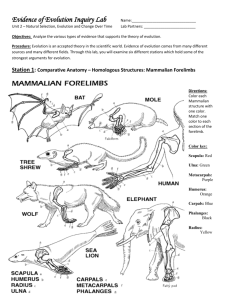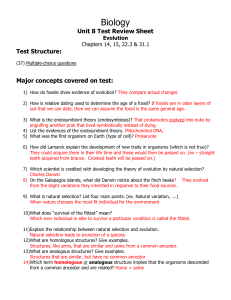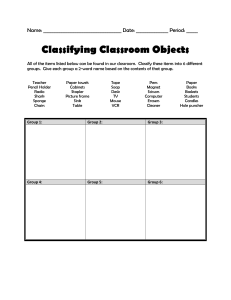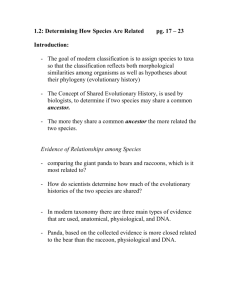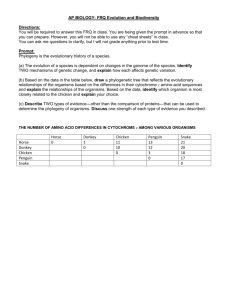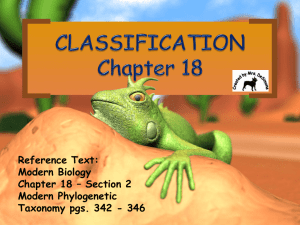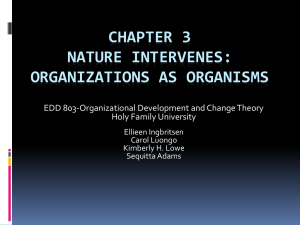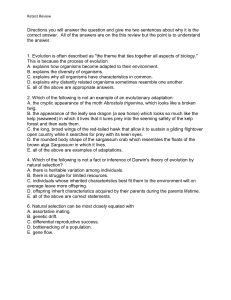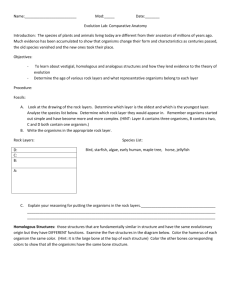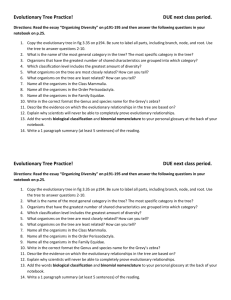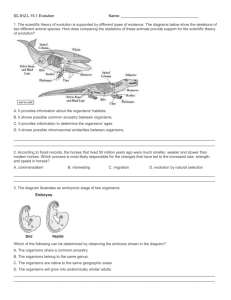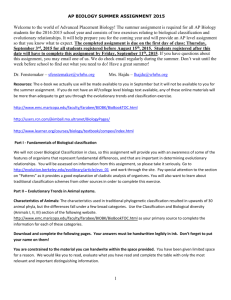Biodiversity and Classification Glossary and
advertisement
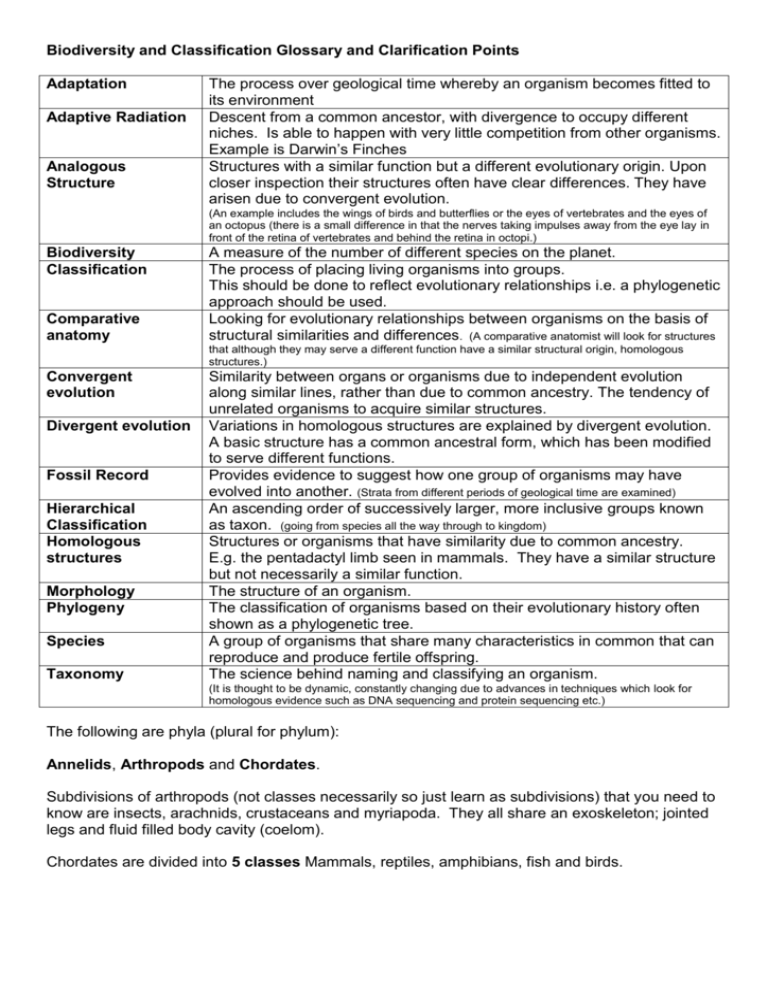
Biodiversity and Classification Glossary and Clarification Points Adaptation Adaptive Radiation Analogous Structure The process over geological time whereby an organism becomes fitted to its environment Descent from a common ancestor, with divergence to occupy different niches. Is able to happen with very little competition from other organisms. Example is Darwin’s Finches Structures with a similar function but a different evolutionary origin. Upon closer inspection their structures often have clear differences. They have arisen due to convergent evolution. (An example includes the wings of birds and butterflies or the eyes of vertebrates and the eyes of an octopus (there is a small difference in that the nerves taking impulses away from the eye lay in front of the retina of vertebrates and behind the retina in octopi.) Biodiversity Classification Comparative anatomy A measure of the number of different species on the planet. The process of placing living organisms into groups. This should be done to reflect evolutionary relationships i.e. a phylogenetic approach should be used. Looking for evolutionary relationships between organisms on the basis of structural similarities and differences. (A comparative anatomist will look for structures that although they may serve a different function have a similar structural origin, homologous structures.) Convergent evolution Divergent evolution Fossil Record Hierarchical Classification Homologous structures Morphology Phylogeny Species Taxonomy Similarity between organs or organisms due to independent evolution along similar lines, rather than due to common ancestry. The tendency of unrelated organisms to acquire similar structures. Variations in homologous structures are explained by divergent evolution. A basic structure has a common ancestral form, which has been modified to serve different functions. Provides evidence to suggest how one group of organisms may have evolved into another. (Strata from different periods of geological time are examined) An ascending order of successively larger, more inclusive groups known as taxon. (going from species all the way through to kingdom) Structures or organisms that have similarity due to common ancestry. E.g. the pentadactyl limb seen in mammals. They have a similar structure but not necessarily a similar function. The structure of an organism. The classification of organisms based on their evolutionary history often shown as a phylogenetic tree. A group of organisms that share many characteristics in common that can reproduce and produce fertile offspring. The science behind naming and classifying an organism. (It is thought to be dynamic, constantly changing due to advances in techniques which look for homologous evidence such as DNA sequencing and protein sequencing etc.) The following are phyla (plural for phylum): Annelids, Arthropods and Chordates. Subdivisions of arthropods (not classes necessarily so just learn as subdivisions) that you need to know are insects, arachnids, crustaceans and myriapoda. They all share an exoskeleton; jointed legs and fluid filled body cavity (coelom). Chordates are divided into 5 classes Mammals, reptiles, amphibians, fish and birds.






